Which NBA players are poised to become breakout stars this season?

When a young NBA player makes that leap from potential and promise to production and performance , it can be a beautiful thing. Last season, we saw players such as Jimmy Butler, Draymond Green, Gordon Hayward and Khris Middleton (to name a few) take their games to another echelon.
So who’s poised for a leap this year? Let's take a look at six potential candidates — one at each position, including a competition between teammates at power forward — and lay out exactly what needs to happen for each player to get to the next level.
Ricky Rubio, PG, Minnesota Timberwolves
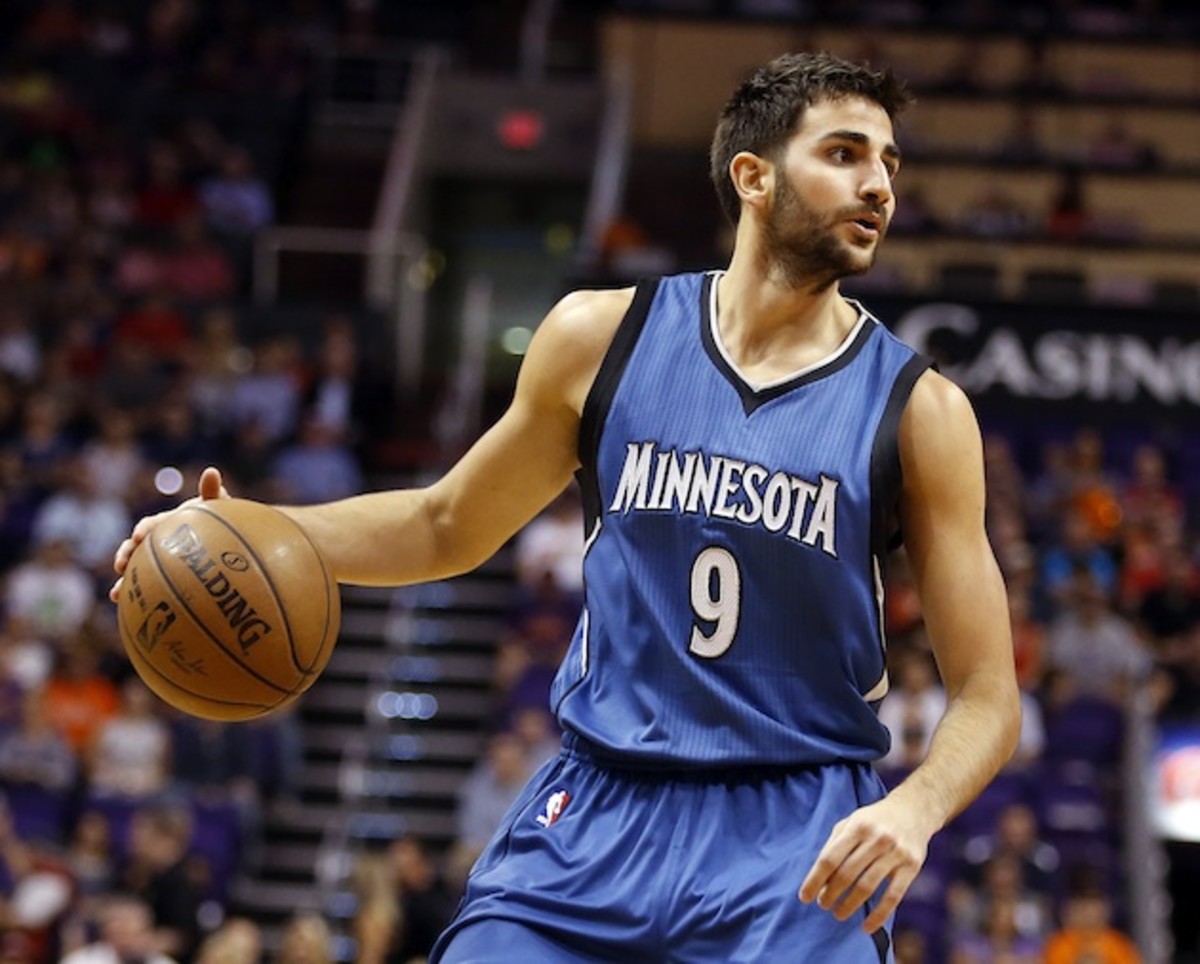
Rubio turns 25 (!) before the 2015–16 season begins. This year is the flashy Spaniard’s fifth in the NBA, and the first of his fresh, four-year, $55 million contract extension, signed one year ago. If he merely maintains the level of production he’s established to this point in his career, Rubio will probably be worth the money the Wolves are paying him, particularly considering how salaries are set to explode over the next few years under the league’s new media rights deal. Still, Minnesota most certainly wants Rubio to exceed that value. For that to happen, the rangy floor general needs to make some improvements.
Uninformed observers will point to Rubio’s defense as a principal area of concern — because, you know, all Europeans are soft and can’t defend— but that’s a lazy falsehood. Rubio moves his feet extremely well, while his long arms help him pluck plenty of steals (he led the NBA in steal percentage in both 2013 and 2014) and contest shots. Rubio only suited up for 22 games last season, but ESPN’s Real Plus-Minus pegged him as the best defender at the point guard position — which, considering he was second the season before, isn’t exactly a fluke. Simply put, Rubio is a good defender.
The place where there remains real room for improvement is on offense. In his first four seasons, Rubio has yet to shoot better than 38% from the field. Rubio is mostly criticized for his jumper, but he has had just as much trouble finishing close to the basket as he has from distance — if not more.
Just how bad is it?
According to Basketball Reference, Rubio has connected on an anemic 46.7% of shots within three feet of the rim during his career, a rate that falls so far below the league average that it’s not even worth making comparisons. In fact, it got so bad during the short time he was healthy last season — when he tallied a woeful 33.3% inside three feet — that he pretty much stopped going to the basket altogether. While a third of Rubio’s shots came within that distance during the first three years of his career, that number dropped to 18% for 2014–15.
Kevin Durant, Kobe Bryant among 10 important comebacks of 2015–16
His reluctance to operate near the rim created an issue not just for Rubio but also for his teammates. After finishing ninth in the league with 8.5 drives per game in 2013–14, Rubio registered just 4.5 drives a night last year (83rd in the NBA, per SportVU data). Moreover, while his drives created 9.5 total team points per game two seasons ago, that number sunk all the way to 4.5 a year ago. After assisting on 5.9 points per contest when driving in 2013–14, that figure plummeted to 3.2 in 2013–14.
For the Wolves to succeed, Rubio needs to do a better job of probing the lane, thereby creating more scoring opportunities for guys like Andrew Wiggins, Nikola Pekovic, Karl-Anthony Towns, Gorgui Dieng, Shabazz Muhammad and Zach LaVine. Drawing defenders into the middle of the floor is arguably the easiest way to do that, particularly in light of Minnesota's glaring lack of outside shooting. Rubio’s passing gifts are such that, so long as he can get a defender to shade even a tiny bit toward him on his way to the basket, he’s more than capable of slipping a feed through the opening , however narrow. By connecting on a higher percentage of his attempts when he opts to shoot at the rim, those lanes will only widen, creating even easier opportunities.
Victor Oladipo, SG, Orlando Magic
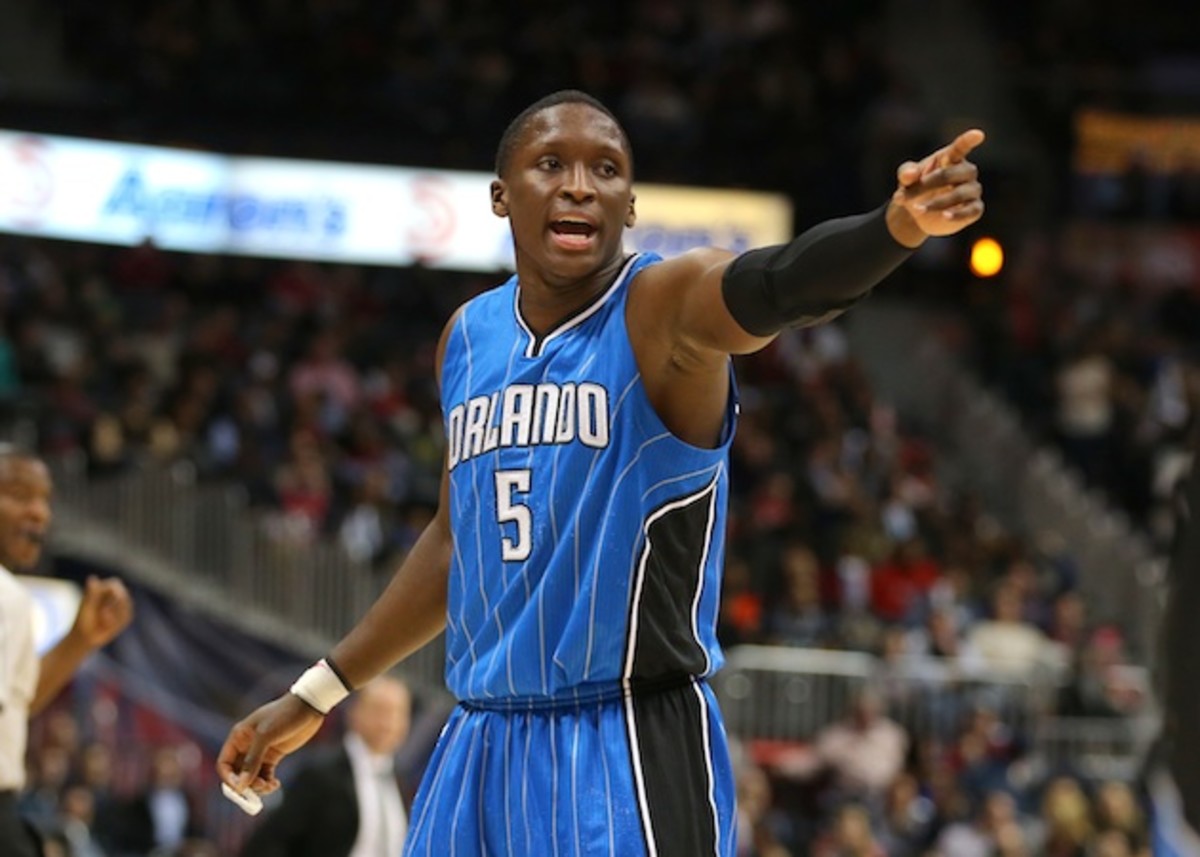
If there’s one player in line for a Butler/Hayward style breakout this season, this is my pick. After spending the majority of his time at the point as a rookie in 2013-14, Oladipo logged most of his minutes last season as Orlando’s primary off-guard. Even as he put a greater emphasis on creating his own offense, he managed to slash his turnovers by nearly five percent. Despite playing more minutes, Oladipo coughed it up 32 fewer times on “bad passes” last season (per Basketball Reference).
In stark contrast to Rubio, Oladipo also dialed up the aggression by driving to the basket more often. After averaging 6.4 drives per contest as a rookie, that number jumped to 9.2 per game in 2014–15. And while Oladipo didn’t connect on a whole lot of those attempts, he showed a consistent ability to get to the rim almost at will. Oladipo’s finishing should improve as he matures . As he learns how to wield his body appropriately, and finish through contact, those drives should become even more productive.
As that happens, though, teams will become more inclined to lay off Oladipo an extra step when he has the ball on the perimeter; the hope being that the third-year guard will give in and settle for the jumper, something his opponents are doing with regular frequency already. The former lottery pick did show improvement with both his stroke and his shot selection last season, cutting down on elbow mid-rangers while raising his three-point clip to right around 34%. From March 1 on, Oladipo hit 36.1% of his triples, including 37.7% from outside the corners. Similarly, he hit on just south of 40% from mid-range after February, nudging himself into respectable territory for about a quarter of the season (22 games).
• MORE: Has time finally caught up with Spurs' Tony Parker?
While new head coach Scott Skiles isn’t exactly known for his offensive creativity, it seems a given that he’ll be able to get Oladipo — and the rest of the Magic roster — to defend closer to his full capabilities. Oladipo slacked some on the defensive end last season, but Skiles has never tolerated that kind of play and definitely won't from someone with Oladipo’s physical and instinctual gifts. A long-armed monster with the potential to defend all kinds of wings one-on-one while also hounding passing lanes for steals and easy transition buckets , Oladipo will only achieve his defensive potential by improving his positioning and focus.
Unlike other players on this list, Oladipo's leap isn't being held back by one weakness; instead, he'll break out as he continues to make incremental improvements he showed last season.
Giannis Antetokounmpo, F, Bucks
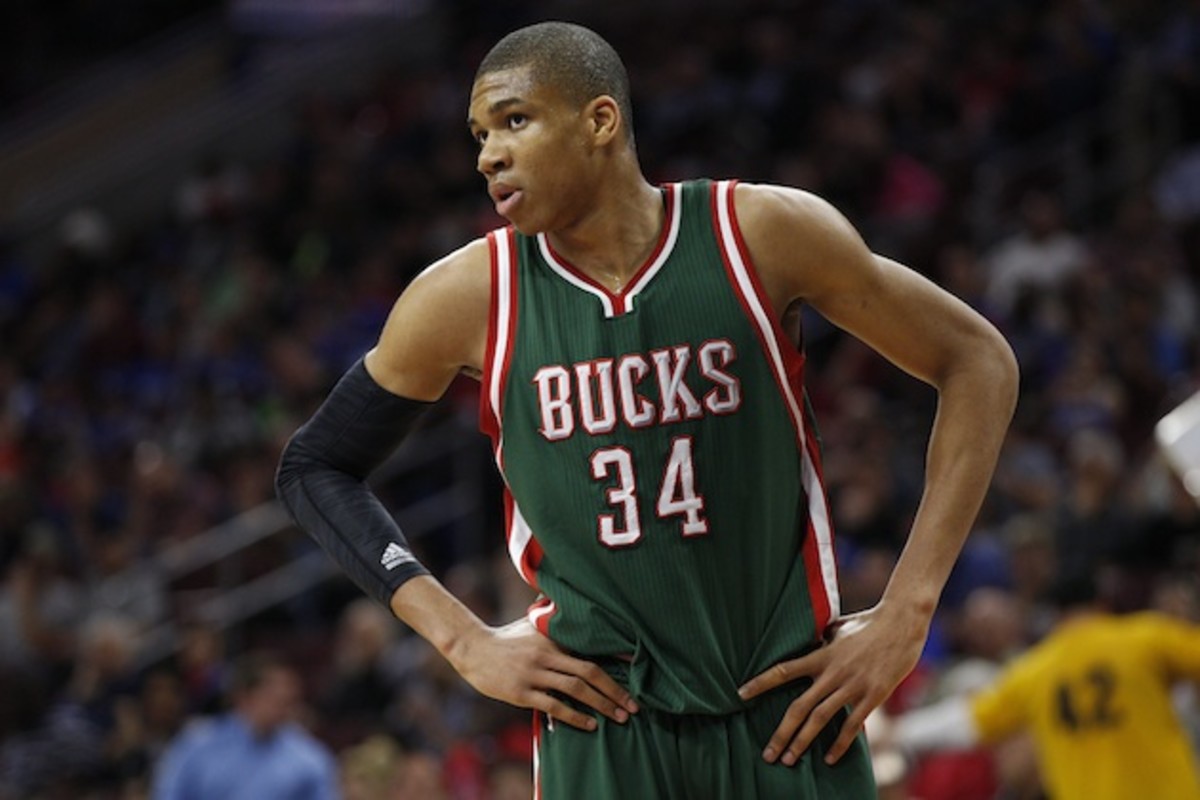
Like Oladipo, The Greek Freak is about to start his third season in the NBA. Antetokounmpo showed a lot of improvement in Year 2, but the Internet-driven hysteria over his game still diverges from reality. Indeed, Giannis gives you so much to work with, so many glimpses of the player he could be, that it can be difficult to accept the player he is.
Put as simply as possible, Antetokounmpo’s immediate improvement boils down to one thing: proving he can score away from the rim. The Freak took 780 shots during the regular season last year, more than half of which came inside the restricted area per NBA.com, finishing on an impressive 61.2% of those attempts. With his otherworldly athleticism and his Amtrak-long arms, converting at the rim is not a chore — even if he’s still fairly slight of frame. Here’s the problem: Antetokounmpo made only 34.2% of his other shots, and was particularly ineffective when he got into the paint but couldn’t get all the way to the basket.
Then there’s this:
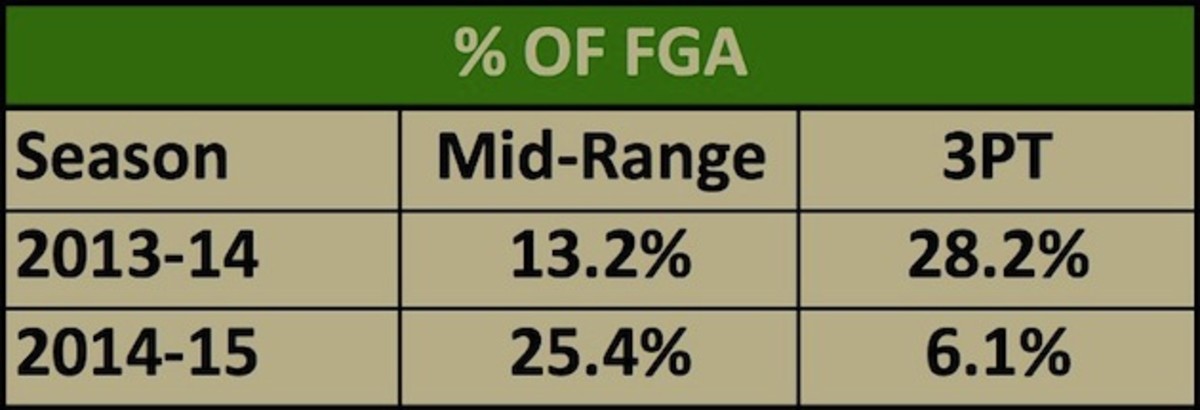
In 2015, slashing one’s frequency of three-point attempts in order to jack more mid-range shots isn’t the most efficient strategy. And while it’s doubtless encouraging that Giannis’s mid-range clip improved last season, it’s tough to put much stock in that when his jumper remained so far off from all other distances. Moreover, a starter-quality NBA wing needs to take more than 44 threes in a season.
Last year’s playoffs laid bare the issue Jason Kidd faces in playing two non-shooters like Antetokounmpo and point guard Michael Carter-Williams together. In the playoffs against the Bulls, Milwuakee's offense only scored 86.4 points per 100 possessions in the 149 minutes Antetokounmpo and Carter-Williams shared the floor. Chicago was so effective at packing the paint that Milwaukee converted only 44% of its shots in the restricted area. The Bucks' final tally: 37% from the field, and 19% from distance.
Carter-Williams needs to improve his shot in his own right, but he doesn’t boast nearly the Swiss-army-knife potential Giannis does. Simply making the defense pay for leaving him open would unlock opportunities for the still-developing Antetokounmpo. If that ever happens, we might finally get to a place where the man has matched the myth.
Terrence Jones/Donatas Motiejunas, PF, Rockets
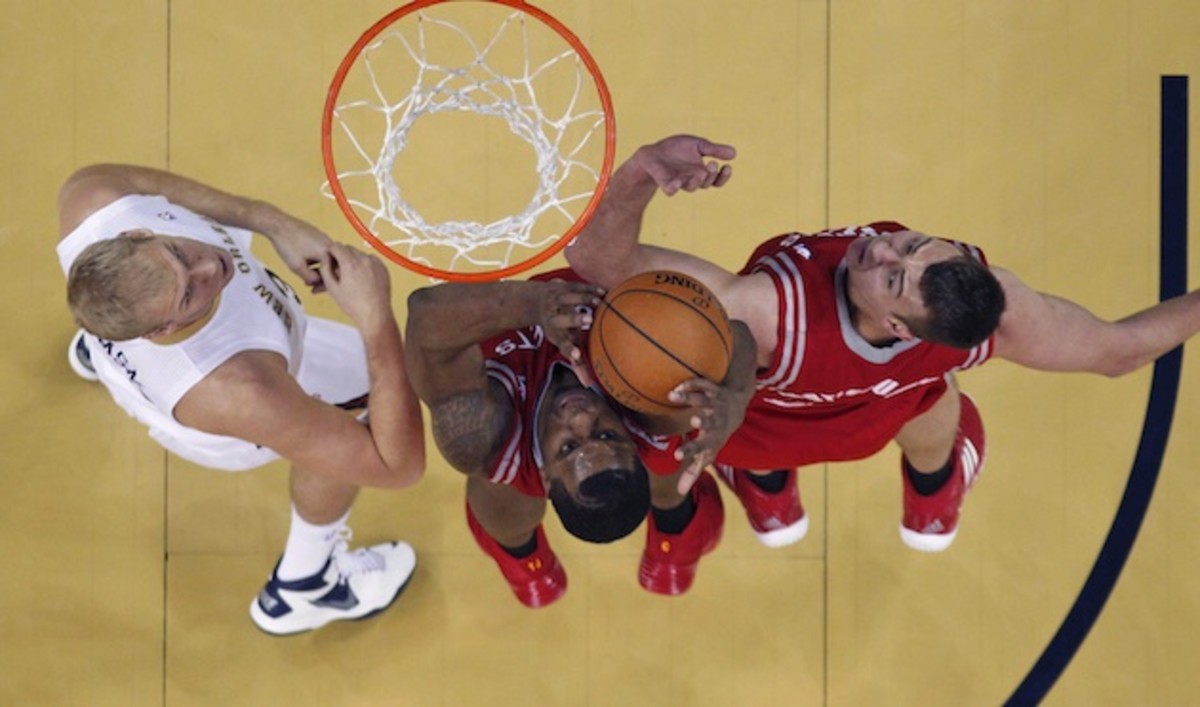
One of these guys is likely to start next to Trevor Ariza and Dwight Howard in the Houston frontcourt, leaving the other to play a presumably meaningful role off the bench. Jones has more experience playing with Dwight Howard (1,617 minutes across the last two years, compared to only 790 for Motiejunas), but the Rockets have fared slightly better when Dwight and Donuts (embrace it) have shared the floor, outscoring opponents by about 3.5 extra points per 100 possessions.
Both Jones (33 games played) and Motiejunas (55) were hampered by injuries last season. With Jones on the mend, Motiejunas emerged as one of the NBA’s most effective post-up weapons, showing both touch and dexterity en route to leading the NBA in points per play out of the paint. Given Howard’s severely limited offense, a post-heavy arsenal doesn’t exactly make for a good frontcourt match. That said, Howard does draw a ton of help (particularly on hard rolls to a rim), which in turn creates perimeter opportunities aplenty for James Harden & Co.
The question of which one of the two really pops next year will likely boil down to who can stretch his jumper most. Oddly, both players actually decreased the percentage of their shot attempts that came from beyond the arc last season, which presents a problem for Houston's offensive ceiling.
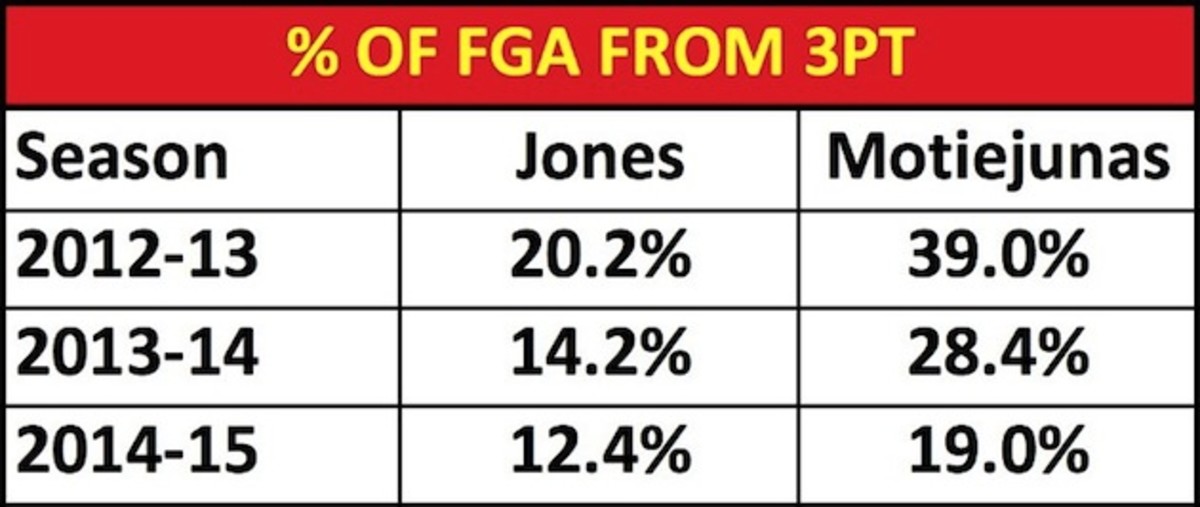
When comparing the two, Motiejunas not only took a higher percentage of his shots from deep (he took more threes last season than Jones has taken in his career); he also converted at a slightly higher clip. Because of Houston’s bevy of threats elsewhere on the floor, whoever fills this role should see plenty of easy looks — a kind of power-forward version of Golden State’s Harrison Barnes. Should one of the two consistently succeed at making the opposition pay, he’ll likely secure not only a regular starting gig, but a hefty payday next summer as well.
Hassan Whiteside, C, Miami Heat
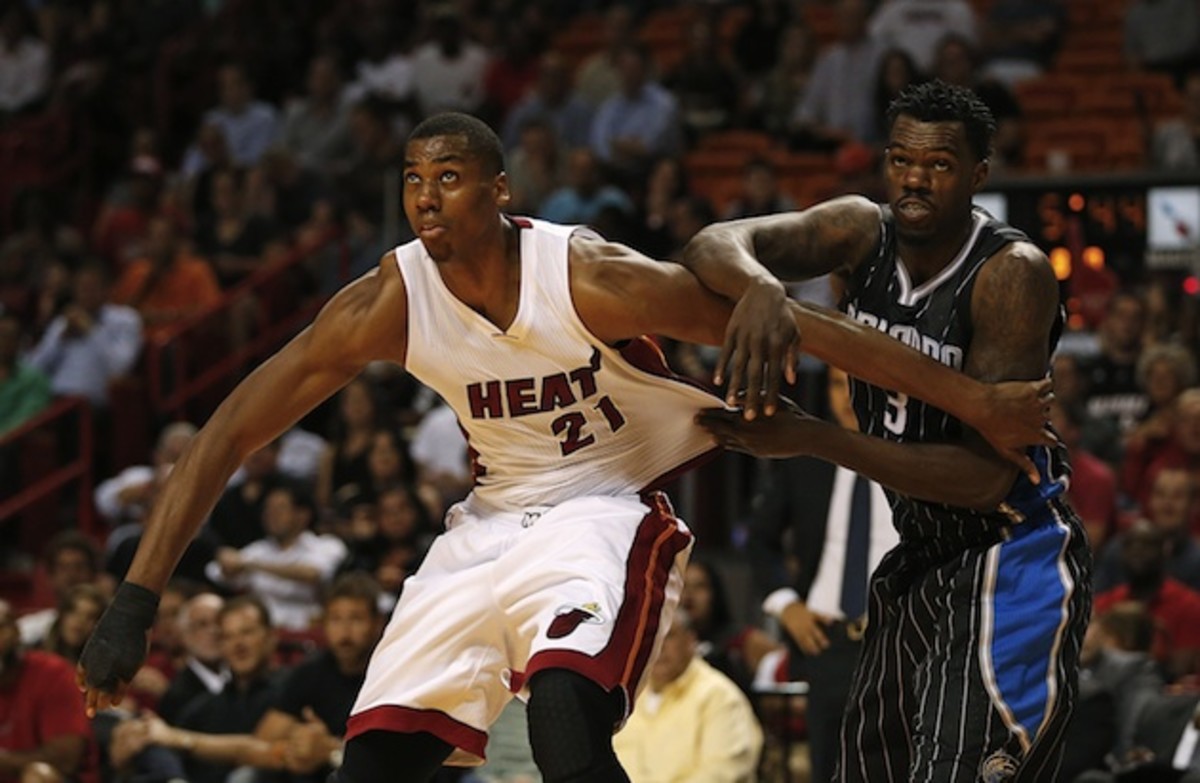
To have a breakout season, Whiteside must prove he can play well and, perhaps more importantly, remain composed every game. No one questions Whiteside’s talent, but his work ethic and behavior have held him back. When he’s engaged and active, Whiteside is more than capable of playing at a consistently high level.
Good Health, and Good Luck: How Oklahoma City can win a title this year
Judging by his incendiary stretch last season, “high level” may be an understatement: In 32 starts, Whiteside averaged 13.6 points, 11.7 rebounds, and 2.8 blocks in only 27.5 minutes per game. That kind of production is almost unheard of. In fact, the only player in NBA history to reach or exceed each of those averages in less than 30 minutes a night was Robert Parish, who did so in his first All-Star season with the Warriors.
But Whiteside also racked up seven technical fouls, a flagrant, and two ejections over 48 games, causing Erik Spoelstra to bench him, chew him out on the sideline and call him out publicly. Teammates, most notably Dwyane Wade, expressed frustration with Whiteside after he delivered a brutal cheap shot to Boston’s Kelly Olynyk. Miami needs Whiteside on the court and in control to have a chance to make a run at the Eastern Conference crown.

